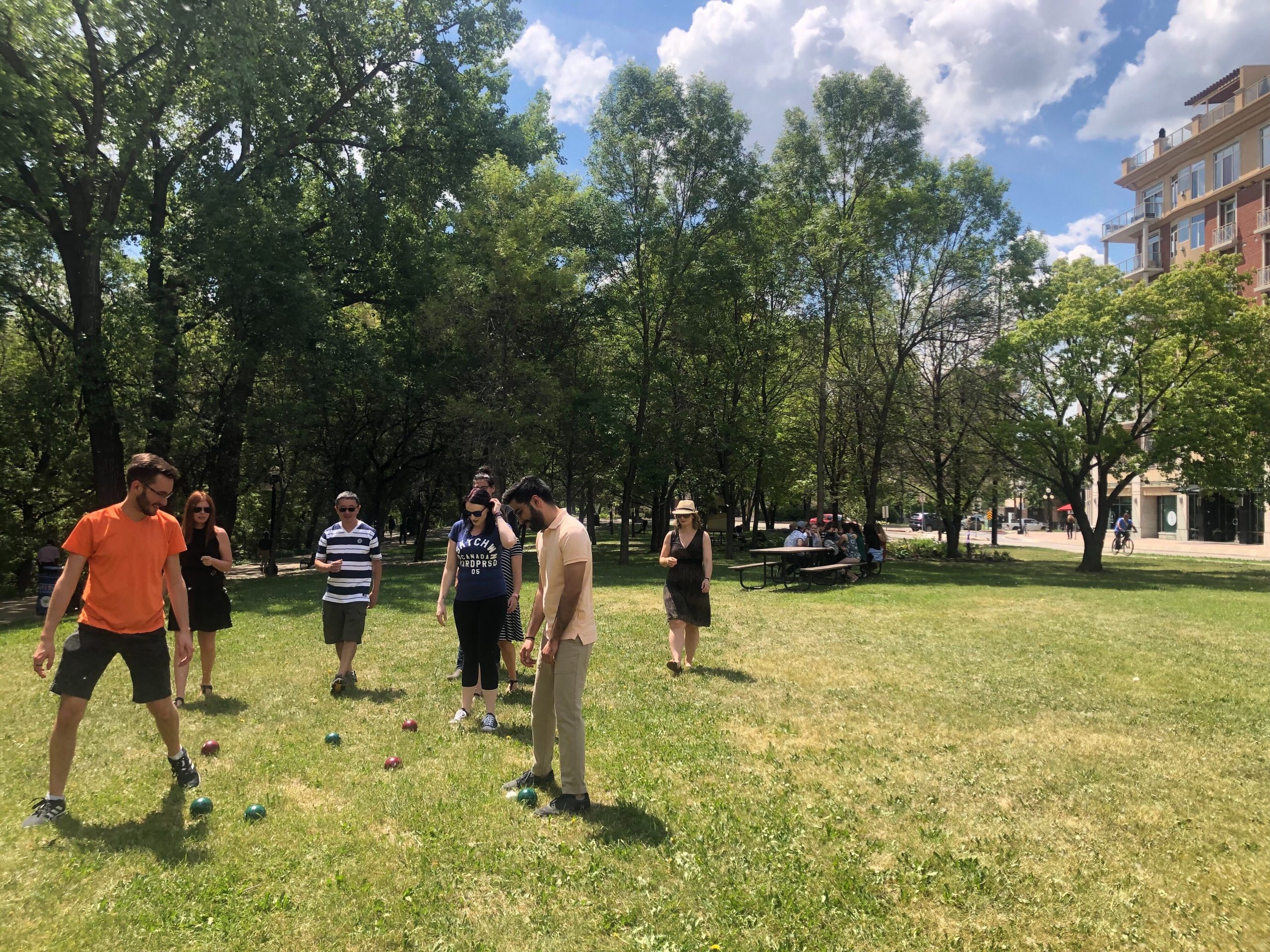By Naturalist Dr. Heather Hinam
So, it’s been a strange year so far. Isolated and for the most part, confined to our homes for almost two months, many people have started to look beyond Netflix and other indoor distractions to bring some excitement to our days. I’ve noticed that more and more people are turning to nature to fill the void: going hiking, buying bird feeders, and planting gardens. It’s a trend that I hope continues. Weaving nature into your life has measurable benefits to your health and the health of our planet.

But what if you live in the centre of the city? How do you engage with nature when your home is in a heritage block or a high rise?
I have good news for you. Nature is everywhere and The Exchange District is full of it. You just have to retune your senses a bit to notice.

A great place to start is Steven Juba Park. Established in 1983, the park is not only a lovely green space for a relaxing lunch or evening stroll, it’s also habitat for dozens of species, a great place to practice tuning back into nature.

Urban Canopy of Trees
Let’s start with something easy. Take a look at the trees, I mean really look at them. Pull them out of your peripheral vision and get to know your neighbours. Winnipeg was built in mix of river-bottom forest and prairie and many of those native species can be found in the park. Manitoba maples sprawl towards the sky, with multiple trunks spreading from a central base. American elms form an umbrella shape while green ash form round canopies. Cottonwoods grow quickly from smooth trees with living greenish bark into thick-trunked giants that send their fluffy seeds everywhere in June.


Another thing you might notice while examining the trees is that some have dozens of small holes drilled in orderly rows up and down the trunk. These are evidence of bird that has one of the best names out there: the Yellow-bellied Sapsucker. I’ve always thought it sounded like an insult from an old western. The sapsucker is a woodpecker and as such, it drills holes in trees. However, unlike most of its cousins, it’s not looking for insects, but for sap. Despite its name, it doesn’t suck sap, but instead uses its long tongue to lap it up. While they can drill hundreds of holes into a tree, most native species can survive their handiwork and the dripping sap attracts other species like butterflies, beetles, hummingbirds, and squirrels.



The Senses of Nature
The park is truly a hive of activity once you slow down to take it all in. Grab a bench or stretch out on the grass and really take note of what’s going on around you. This time of year you’ll smell the sweet aroma of cottonwood and poplar buds and hear the rustling of red squirrels tearing through the trees. In the morning, American Robins and Song Sparrows provide the soundtrack for the day. For the next week, you should see the bright yellow flash of Yellow-rumped Warblers, affectionately known as ‘butter-butts’ flitting among the canopy and shrubs. Eventually they will move north and replaced by summer residents, like Yellow Warblers and Least Flycatchers.

If you’re lucky, you might hear the loud ‘kak-kak-kak’ of the resident pair of Cooper’s Hawks that have built a nest in the canopy. These sleek grey raptors speed through the forest looking for unsuspecting birds to feed themselves and their young.

Listen for the buzzing of bumble bee queens waking up from their winter sleep in the leaf litter. You’ll find them foraging in the dandelions, catkins, and flowerbeds. Once they’ve shook off their spring sluggishness, the queens will start building new hives near the base of the trees. Unlike the non-native honeybee, bumble bee hives only last for a year. After raising a batch of new queens to carry the next generation through the winter, the workers and drones that make up the rest of the hive die off.
Tools to Explore
I feel like I’ve barely scratched the surface, there is so much that I want to share with you. However, the discovery is part of the fun and plays a large role in getting people ‘hooked’ on nature. So, I invite you to go out there and explore. You don’t need to be able to identify what you’re seeing or hearing. Just take the time to get to know it in a way that works for you. For those who really want to get into ID, apps like iNaturalist and Merlin are a great way to get started, or you can send your questions to me. I’m always happy to help. I just hope that if anything good comes out of this pandemic, it’s a reawakening to the wonders of nature. Once you start tuning back in, you’ll find you’ve acquired a whole new level of awareness of the world that will enrich your life wherever you go.
Heather Hinam is a naturalist, educator, artist, interpretive planner, and guide.

